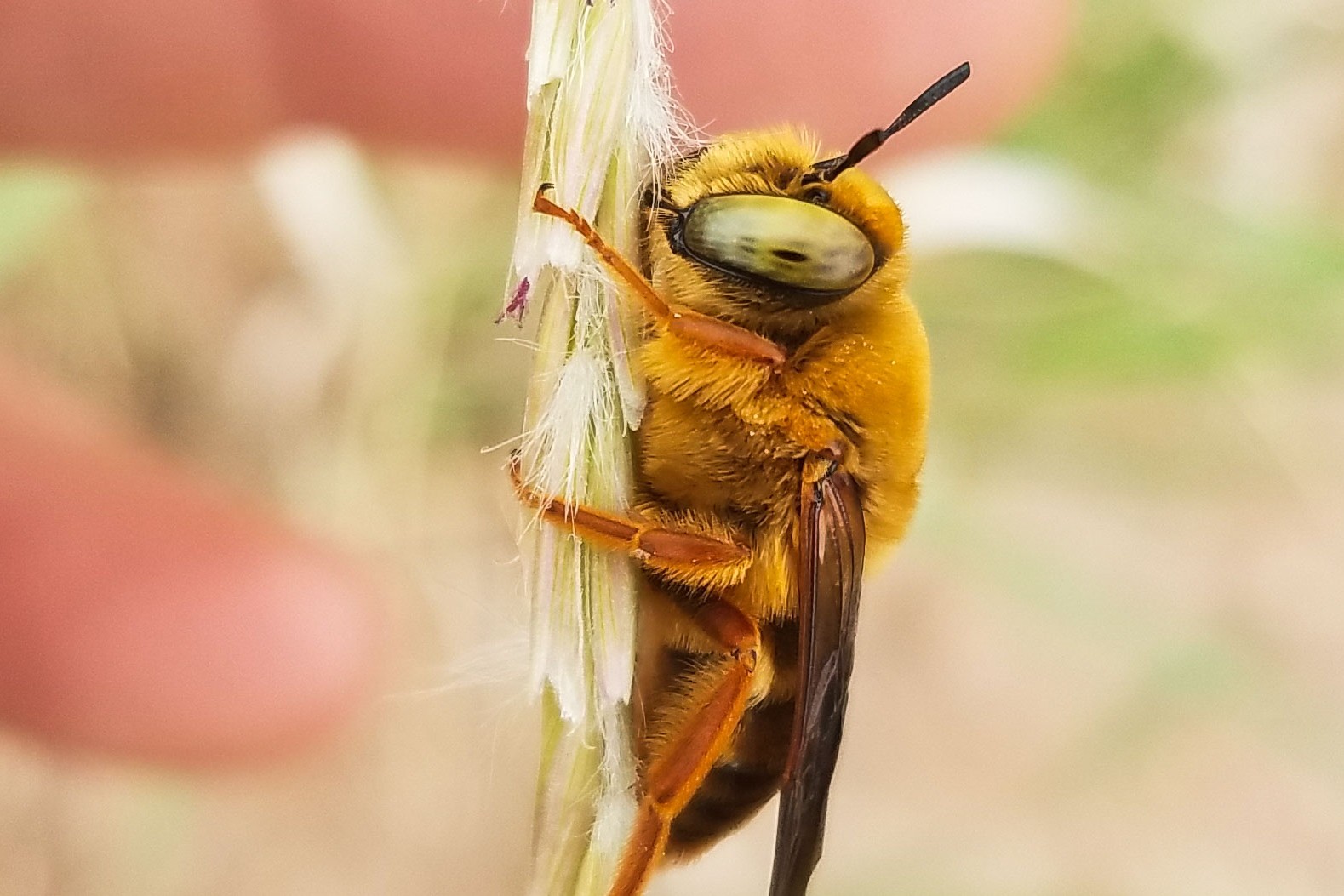Objective:
Native bees are crucial members of functional ecosystems, providing the ecosystem service of pollination to a majority of flowering plant species. The southwestern USA is a hotspot of bee biodiversity, with an estimated 1,000 species of native bees present in New Mexico alone. We track variation in dryland bee populations over time to understand drivers of bee declines and monitor changes in pollination services under increasing environmental variability.
Novelty:
Our study is, to our knowledge, the world’s longest continuous bee monitoring effort to date. We have already detected long-term change in bee community composition.
Design:
We monitor bees in three core ecosystem types: Chihuahuan Desert grassland, dominated by black grama grass; Plains grassland, dominated by blue grama grass; and Chihuahuan Desert shrubland, dominated by the bee-pollinated shrub, creosotebush. Bees are collected using passive funnel traps (yellow and blue) that are opened continuously for two weeks each month from March through October. One trap is located at each end of five 200 m transects per site, with one blue and one yellow funnel per transect (total across the three sites: N = 30 traps, with 15 traps/color). This design allows examination of bee population and community patterns across ecosystems, months, and years.

Responses:
Our study design yields abundance data in the form of individual bee species counts for each month and ecosystem. Data have been collected continuously since 2002, and to date include records of >325 bee species representing 56 genera. Bee specimens are processed and archived in the Museum of Southwestern Biology: Division of Arthropods, and identified to the species level. Dr. Karen Wright (Associate Curator, Texas A&M University Insect Collections) initiated this dataset and continues to identify the collected bees. Bee abundance data can be paired with ‘Core monitoring data: Plant phenology’ to examine spatial and temporal concordance in bee and plant communities.
Supporting Documents:
Bee species abundance and composition in three ecosystem types at the Sevilleta National Wildlife Refuge, New Mexico, USA. https://portal.edirepository.org/nis/mapbrowse?scope=knb-lter-sev&identifier=321
